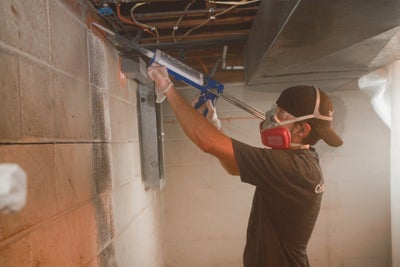The History of Radon

Radon is a colourless, odourless gas that can pose serious health risks if not properly managed. Understanding radon’s significance begins with knowing its history. From its discovery to its recognition as a health hazard, the journey of radon has been crucial in shaping our awareness and safety measures.
The story of radon is not just about its scientific discovery but also about how its impact has evolved, leading to greater efforts in detection and mitigation. By delving into the history of radon, we gain valuable insights into its behaviour, risks, and the steps necessary to protect our homes and health from this silent danger.
Early Discoveries of Radon
Radon’s journey from a hidden gas to a recognized health hazard began with German chemist Fredrick Giesel, who first isolated it in 1899 while studying radium. This breakthrough revealed radon as a distinct radioactive gas.
Soon after, physicist Ernest Rutherford and chemist Frederick Soddy expanded on this discovery. Furthermore, Rutherford’s experiments clarified radon’s radioactive nature, while Soddy’s work on isotopes helped understand its behaviour and decay. Their combined efforts uncovered the serious health risks associated with radon exposure, such as lung cancer, and laid the groundwork for future research and safety measures.
Early Recognition of Radon’s Harmful Effects
Radon’s danger first became clear through studies of coal miners in the early 20th century. Researchers found that miners, working in tight, poorly ventilated, underground spaces, had high rates of lung cancer. The culprit? Radon.
This gas built up in mines, and miners inhaled its radioactive particles, which wreaked havoc on their lungs. The link between radon and cancer was undeniable, sparking the need for action.
But soon, it was clear that radon wasn’t just a miner’s problem—it posed risks to everyone. This realization led to broader research and safety measures to tackle radon’s impact on public health.
Stanley Watras and the History of Radon
Experts realized that radon was a threat beyond just mines was dramatically highlighted by the story of Stanley Watras in the 1980s. Watras, an engineer at a nuclear power plant in Pennsylvania, kept triggering the plant’s radiation alarms every time he arrived for work. This was puzzling because the plant was still under construction and not yet producing any radiation. Concerned for his safety, officials decided to test Watras’s home. They discovered that the source of the radiation was his basement.
Further investigation revealed that the high radiation levels were due to radon gas seeping into his home. This shocking discovery proved that radon wasn’t just a problem confined to mines. It could also accumulate to dangerous levels in residential spaces. Watras’s case became a pivotal moment in the history of radon, sparking a widespread push for radon testing and mitigation in homes across the country, and raising awareness of the invisible dangers lurking in everyday environments.

Impact on Public Awareness
The discovery that radon could seep into homes, not just mines, sparked public awareness and prompted swift regulatory action. Government agencies quickly implemented stricter guidelines and regulations for radon testing and mitigation in residential buildings, like the guide here. These aim to reduce radon exposure and protect public health.
Public health campaigns were launched to educate homeowners on the dangers of radon and the importance of regular testing, making radon awareness a national priority. In response, numerous studies were conducted to investigate the prevalence of radon in homes across different regions. These studies provided critical data, confirming that radon levels could reach dangerous levels in many residential areas, far beyond industrial sites.
As a result, this research helped reinforce the need for continued vigilance, testing, and mitigation efforts, ensuring that the risks of radon remain a focus for both homeowners and policymakers.
How to Protect Yourself Against Radon
Homeowners can take several proactive steps to protect themselves from the dangers of radon. But the first and most important step is testing. Conducting a radon test is the only way to know if radon levels in your home are safe. Affordable do-it-yourself radon test kits are widely available, or you can hire a professional to conduct a more thorough test.
If you detect elevated radon levels, installing a radon mitigation system is crucial. These systems work by venting radon from beneath your home to the outside, preventing it from entering your living spaces. Getting a professional to seal openings in your home’s foundation and improve ventilation can also help reduce radon levels. Additionally, regular radon mitigation system maintenance ensures its effectiveness over time.
Staying informed and taking action is key—by addressing radon risks head-on, homeowners can protect their families and create a healthier indoor environment.

Trust Groundworks to Protect You From Radon
Understanding the history of radon is vital for every homeowner. Radon has proven to be a silent danger that requires serious attention. The journey of radon from obscurity to a recognized public health hazard underscores the importance of testing and mitigation.
At Groundworks, we are C-NRPP certified for radon mitigation installation and testing, ensuring your home remains safe and radon-free. Don’t leave your family’s health to chance— test your radon and schedule a free radon mitigation estimate today. Trust Groundworks to provide the expertise and solutions needed to protect your home from this invisible threat.

Radon FAQs
It’s recommended to have a professional install the system to ensure it meets EPA guidelines and is effective in reducing radon levels.
The EPA recommends taking action to mitigate radon in homes with radon levels at or above 4 picocuries per liter (pCi/L) of air.
Properly designed and installed radon mitigation systems can reduce radon levels by up to 99%.